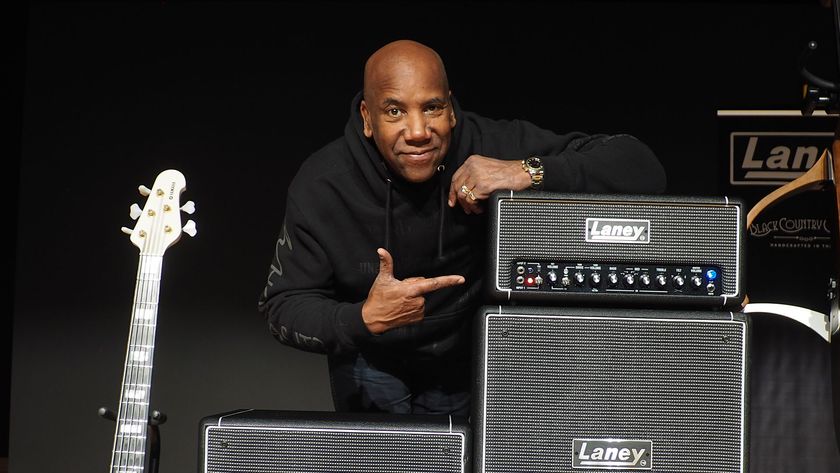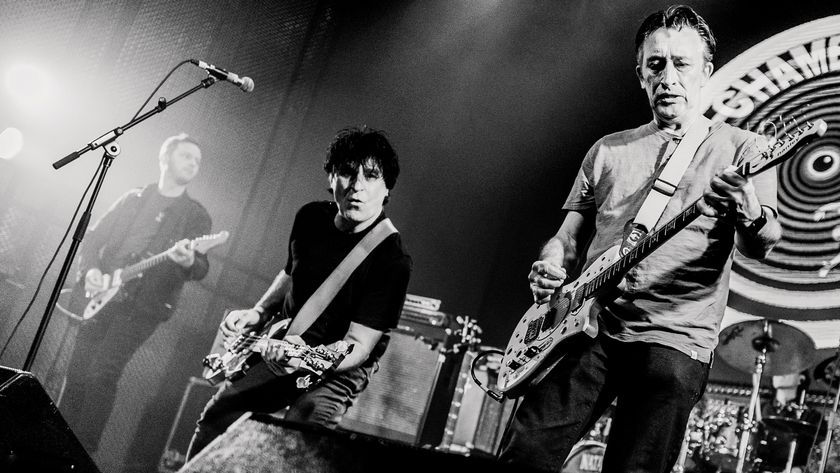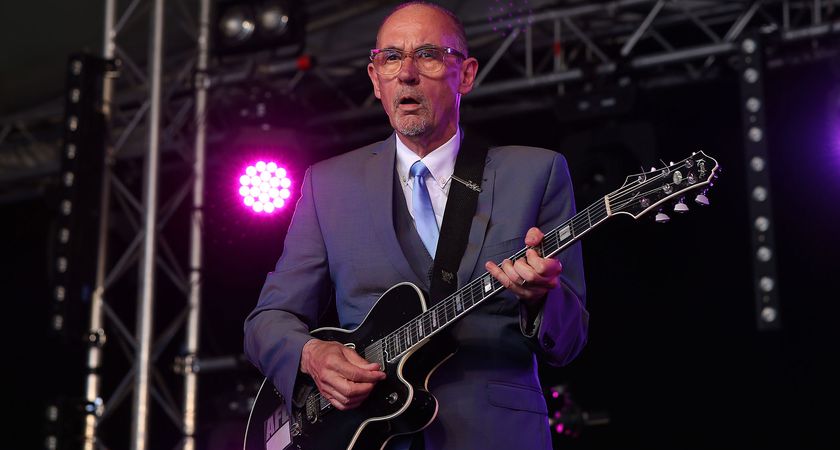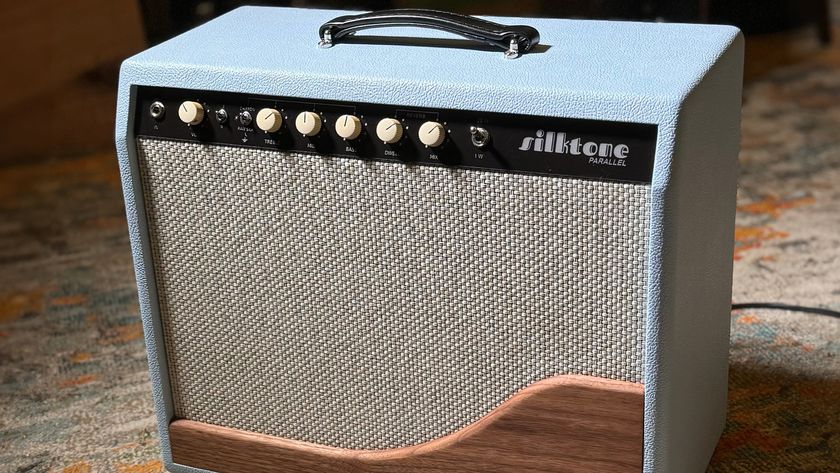Crowd-Funding Check List
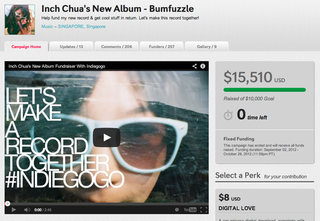
I recently hosted a panel on a hot topic: crowd-funding. The consensus? Smart musicians can be very successful at raising money this way. But it's a job. Crowd-funding requires some ingenuity, a business plan, and truck-loads of dedication. There's so much more to running a successful crowd-funding campaign than meets the eye. So what is this mysterious “crowd-funding” I speak of? How can you take advantage of the wave? I set out to find out the best practices for reaching your goal. And after conversations with representatives from Kickstarter, PledgeMusic, Indiegogo and ArtistShare, and a whole lotta research, I’m ready to share.
A crowd-funding definition Launched in 2003 by ArtistShare, the first fan-funding project was with musician Maria Schneider. It went on to win a Grammy. Here’s what happens: You pick a crowd-funding host site. Set up an explanation of your project, often with video and text, and different levels or “rewards,” you know, the things people can pay for. And then you reach out to your network like crazy as you ask them to purchase rewards that will help pay for your project. Sounds simple, right? Ah, my dear, we have only just begun.
Pick your platform Each of the sites I spoke to has a slightly different take on the crowd-funding mission. “We don’t call it crowd-funding,” says Benji Rogers of PledgeMusic. “This is about helping artists to get their music in the coolest possible way to the fans that want it.” PledgeMusic adds the element of raising funds for charity while you are funding your own project. “The fan not only helps the artist, they help a charity as well. And quite often the charity will get involved in helping get the word out about the artist’s project,” Rogers adds. ArtistShare, the original fan-funding website, helps build careers, not just fund individual projects. Founder Brian Camelio explains, “We prefer that we don’t focus on just ‘give me money.’ It’s about building an experience. We take on artists for their career, not just for one project.” Their projects have won several Grammy awards, and they focus more on jazz, classical, world music and other genres that have traditionally been tough to make a living at. Kickstarter, perhaps the largest and best-known of the crowd-funding, well, crowd, is more about volume. “There have been more than 30,000 successful campaigns on Kickstarter since we launched in 2009,” shares Kickstarter’s Justin Kazmark. And Indiegogo, another large site that offers not only music projects, but also projects for design, health, gaming, film and more, is highly international. “We have campaigns running right now from over 190 countries,” says Karen Bair, Indiegogo’s Music Growth liaison. The takeaway? Do your research. See which hosting site feels like the right fit for you. Read all the about docs on their site. And be prepared.
Take my hand — or not Make sure you are comfortable with how much, or how little, the site is involved in what happens with your campaign. ArtistShare is in it for the long haul, and so they are intimately involved in assisting in bringing their artists’ projects to full fruition. Camelio says, “We do a lot of hands-on work with the artist. We also provide tons of services including business consultation, promotion, distribution, fulfillment and more. We only take on a limited number of people, because I want to purposely keep it small and work with artists who really believe in this model and take it to the next level. The artist still owns everything, but we are a partner in spirit.” Maybe you don’t want or need that much involvement. Sites like Kickstarter and Indiegogo provide tools for promotion, but mostly leave what happens with your campaign up to you. They do, however, offer support if you are in need. “We have Customer Happiness Agents that are there to help you if you need it,” says Indiegogo’s Bair. I say, take advantage of any help these sites will give you. This is what they eat, sleep and breathe all day, every day. They’ve seen ‘em succeed and fail probably way more than you want to know!
Build your fan base I know this seems obvious, but the stronger your fan base is before you start, the more likely you are to see success. So dedicate your time to building a wide fan base before your crowd-funding campaign begins.
Plan ahead With a crowd-funding campaign, it’s like you are marketing and selling your project before it’s completed, not after. A plan is imperative. You’ve got to have your messaging and timeline prepared. Know how you are going to reach your network, and how you are going to get others to message for you. A fact from Indiegogo: “Campaigns with teams raise 80 percent more funds than those run by an individual.” Is your project for your band? Get them involved in the plan too and make sure they know what the expectations are for messaging and promotion.
Set realistic goals Be sure not to set your goal too high. What’s the sweet spot? It’s hard to say, but some sites like PledgeMusic will take a look at the size of your network and your lists and recommend a number. PledgeMusic’s Rogers expands, “We launch two albums per day, and we screen people only in the sense that we say to them, is what you want possible? We work on campaigns with the artist, because we don’t want them to fail because what they are asking for is not realistic. They are not experts in marketing, so they need help.”
Get The Pick Newsletter
All the latest guitar news, interviews, lessons, reviews, deals and more, direct to your inbox!
Get things rolling Here’s some interesting info. If you can get enough interest to get over the 20 percent hump, your chances of making it all the way are much improved. Kickstarter shares these statistics: “Of the projects that have reached 20 percent of their funding goal, 82 percent were successfully funded. Of the projects that have reached 60 percent of their funding goal, 98 percent were successfully funded. Projects either make their goal or find little support. There's little in-between.” So push it, get things rolling, and then your network will help you succeed!
Know how it works Kickstarter campaigns are “all or nothing.” If you don’t reach your goal, you get nothing and your funders are not charged. The reasoning? If the project doesn’t get fully funded, perhaps the project can’t happen as planned and the risk to those who did invest becomes greater. But not all campaign hosts are like this. Indiegogo offers what they call a “flexible funding” option. If you choose this option and don’t make your goal, you get the money that you did raise. BUT, Indiegogo takes a bigger cut. The key is to be very transparent with your funders, let them know the status of your project all along the way, and get them rooting for you! They want you to succeed!
Show me the money Some sites give you all the money as soon as your campaign ends. Others, like PledgeMusic, dole it out in increments, with the bulk going out at the beginning and the rest as you reach certain milestones. Make sure you understand the payment structure so that you have enough to do what you need to for successful completion.
Prepare your pitch If you take a look at a bunch of crowd-funding projects, you’ll realize that many of them have similar elements. A video that helps set the stage is a great tool that helps you connect with your potential funding group. According to Kickstarter, “Projects with a video succeed at a much higher rate (50 percent vs. 30 percent)” They even have Kickstarter School tutorial “How to Make an Awesome Video.” So you know you can get it right! Here are the Kickstarter video basics:
•Tell us who you are. •Tell us the story behind your project. Where'd you get the idea? What stage is it at now? How are you feeling about it?
•Come out and ask for people's support, explaining why you need it and what you'll do with their money.
•Talk about how awesome your rewards are, using any images you can.
•Explain that if you don't reach your goal, you'll get nothing, and everyone will be sad.
•Thank everyone! I’m told that a video that shows your face is the most appealing. But then be playful, have fun, show your audience how passionate you are.
Get perk-y As Kickstarter’s Kazmark says, Kickstarter is “at the intersection of commerce and patronage.” So when you set up your campaign you’ll need to prepare a series of Perks or Rewards that your fans will pay in to receive. This is your time to get creative. The quirkiness of your perks can make or break your campaign. A perk could be as simple as your CD when it’s released to as complex as one that the Ben Folds Five recently offered on their PledgeMusic campaign. For $2,500 you could have your name placed into the recording of their song, “Do It Anyway” (with a few details to be mentioned in the lyric), and they replaced the last verse of the song with their patron’s own personalized verse. Oh, and did I mention that this very same new album debuted on Billboard’s Top 10 and the band reached 368 percent of their goal? And don’t forget to offer perks and rewards at all price levels. According to Kickstarter: “Projects without a reward less than $20 succeed 35 percent of the time, while projects with a reward of $20 or less succeed 54 percent of the time.” So simple and yet so important! One other tip that came artist Inch Chua? See if you can partner with business or brands so that your rewards have an extra kick. I mean, who wouldn't want your CD plus a limited edition Vans t-shirt?
It’s not about the money One of the most important things to note about this funding model is that it’s really not about the money. It’s about the unique experience that fans can share, as Rogers of PledgeMusic emphasizes, “Fans pledge here to be a part of the making of a new album, and from day one they get exclusive access to a part of the site where they can see rough mixes, live tracks, demos, blogs, and they get taken along on the journey of how it’s made.” Camelio of ArtistShare concurs, “I am completely fascinated by anyone’s creative process. Who knows where it comes from?! I want to bring the fans in so they can witness the creative process. And if for some reason the end result isn’t what they expected, they still had a great experience watching it happen. Once you get to know the artist you have a much deeper understanding and appreciation of what they do. The loyalty in fan base has increased incredibly.” Speaking of… So what happens if you run a successful funding campaign and for some reason or other you can’t complete your project on time? Your drummer quits, your studio is flooded, who knows what could happen? You are legally obligated to deliver on what you have promised your funders, but many of them will understand and maybe even offer to help if things go awry, as long as you are transparent and bring them along through your obstacles. Challenges like these can bring you and your fans even closer together.
Don’t be shy Crowd funding is not for the shy violet. Not only are you putting your music out there, you are asking people to pay you money to finish something they haven’t seen or heard yet. You’ve gotta ask, and ask, and ask again! Now, for some of you, this is tough. You don’t want to be annoying, you hate asking for money, it’s hard. But think about it this way. You are asking your network to invest in a project that will bring them some sort of return, be it an actual product that they can enjoy or simply the satisfaction of being part of something creative and unique. So be inclusive, thank them profusely, let them know what their participation means to you and your project. And yes, ask again. But don't ask too often, as you don't want your audience to get annoyed.
Keep ‘em in the loop And speaking of your investors, think of them as your partners. Share behind the scenes videos, updates, an exclusive listen of a rough mix. Let your support group feel like they are a part of bringing something amazing to fruition. That means regular updates, and constant communication. Share positive comments from supporters. Make each one of them feel special! Artist Juliana Hatfield released a new album funded through PledgeMusic. Rogers shares, “As part of her pledges-only updates, Juliana took pictures of her guitar rig so you could see what gear she was using. You know, what pedals she was using when. And she showed waveforms when she was working out new guitar sounds.” Know what’s appealing to your audience, and let them live behind the scenes with you.
Surprise and delight I know you want your album done and out in a month. But is that really realistic? Promise less and deliver more and you will surprise and delight your fan base.
Set the tone In researching this article I’ve reviewed a whole lot of campaigns. My favorites? The ones that don’t take themselves to seriously, that have fun and clever videos, that have really unique rewards, those are the ones I remember. I want to help them just because they are so different and smart. But you don’t have to be funny to be memorable. Just really think about what will be appealing to your audience. What elements will really make them want to see you do more. Survey your fans if you want and see what they think…then they are already invested in the success of your project. And keep going. “We don’t end campaigns after 30 days or 60 days,” says Rogers of PledgeMusic. “We keep the campaign going until the project’s is release date. So all of the pledges count as preorders to SoundScan. Because we focus on the success of the entire project, not just the funding goal, we have a very high success rate. Our six month success rate is 90 percent.” This is about the long-term people. Keep it going and your fans will stick with you.
Promote and they will come One final note. Each of these sites has featured projects on their homes pages, in newsletters, Facebook pages, and more. How do you get featured? “Indiegogo has a program called the gogofactor,” Bair says. “It’s based on how much activity is going on at a campaign. How much interaction, posting, traffic and more.” Other sites combine quantitative methods like this with qualitative hand selection. Kickstarter’s Kazmark shares, “We have an editorial team who is curating the site and looking for projects that make good use of the platform and have thoughtful rewards and are telling a compelling story. You could be a small project and be featured.” So think long and hard. Create a plan. Prepare, and then keep it going. I’m rooting for you! Laura B. Whitmore is the editor of Guitar World's Acoustic Nation. A singer/songwriter based in the San Francisco bay area, she's also a veteran music industry marketer, and has spent over two decades doing marketing, PR and artist relations for several guitar-related brands including Marshall and VOX. Her company, Mad Sun Marketing, represents Dean Markley, Peavey Electronics, SIR Entertainment Services, Music First, Guitar World and many more. Laura is the founder of the Women in Music Network at thewimn.com, producer of the She Rocks Awards and the Women's Music Summit and co-hosts regular songwriter nights for the West Coast Songwriters Association. More at mad-sun.com.
Laura B. Whitmore is a music industry marketing veteran, music journalist and editor, writing for Parade.com, Guitar World, and others. She has interviewed hundreds of musicians and hosts the She Rocks Podcast. As the founder of the Women’s International Music Network, she advocates for women in the music industry and produces the annual She Rocks Awards. She is the Senior Vice President of Marketing for Positive Grid, making the world safe for guitar exploration everywhere! A guitarist and singer/songwriter, Laura is currently co-writing an album of pop songs that empower and energize girls.
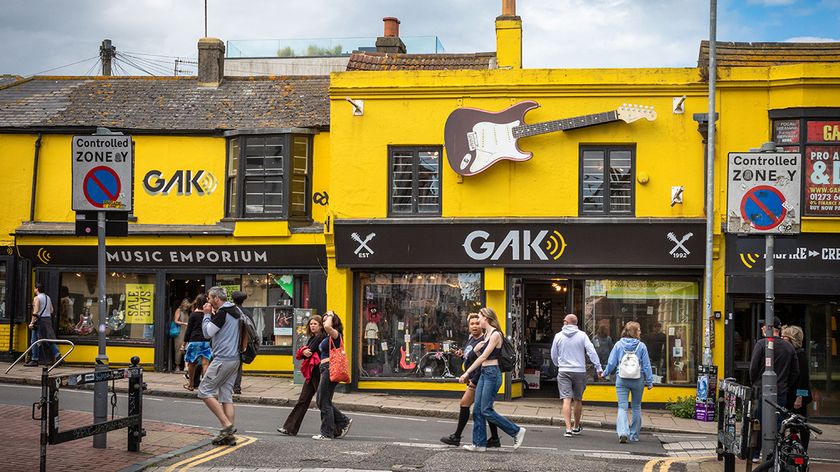
One of the UK’s biggest music retailers takes website offline and shuts store for “maintenance”, fueling closure speculation
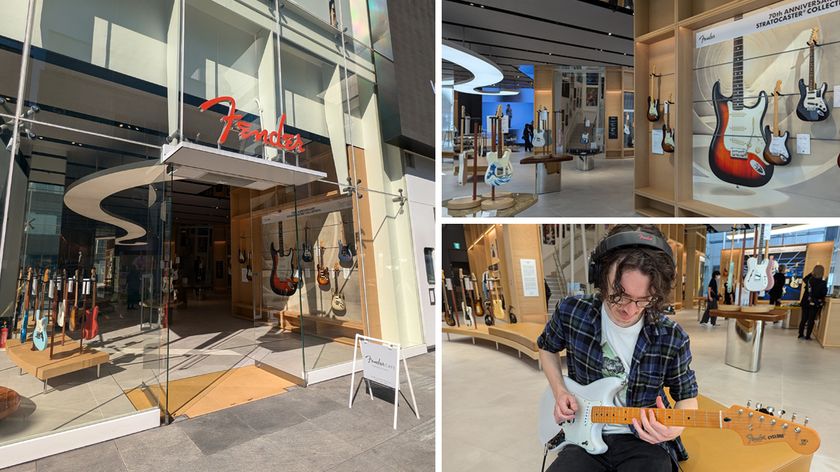
“If fashion brands and computer brands can do it, why can’t we?” I journeyed to the only dedicated Fender store in the world – and found out how it could change the future of guitar retail as we know it

